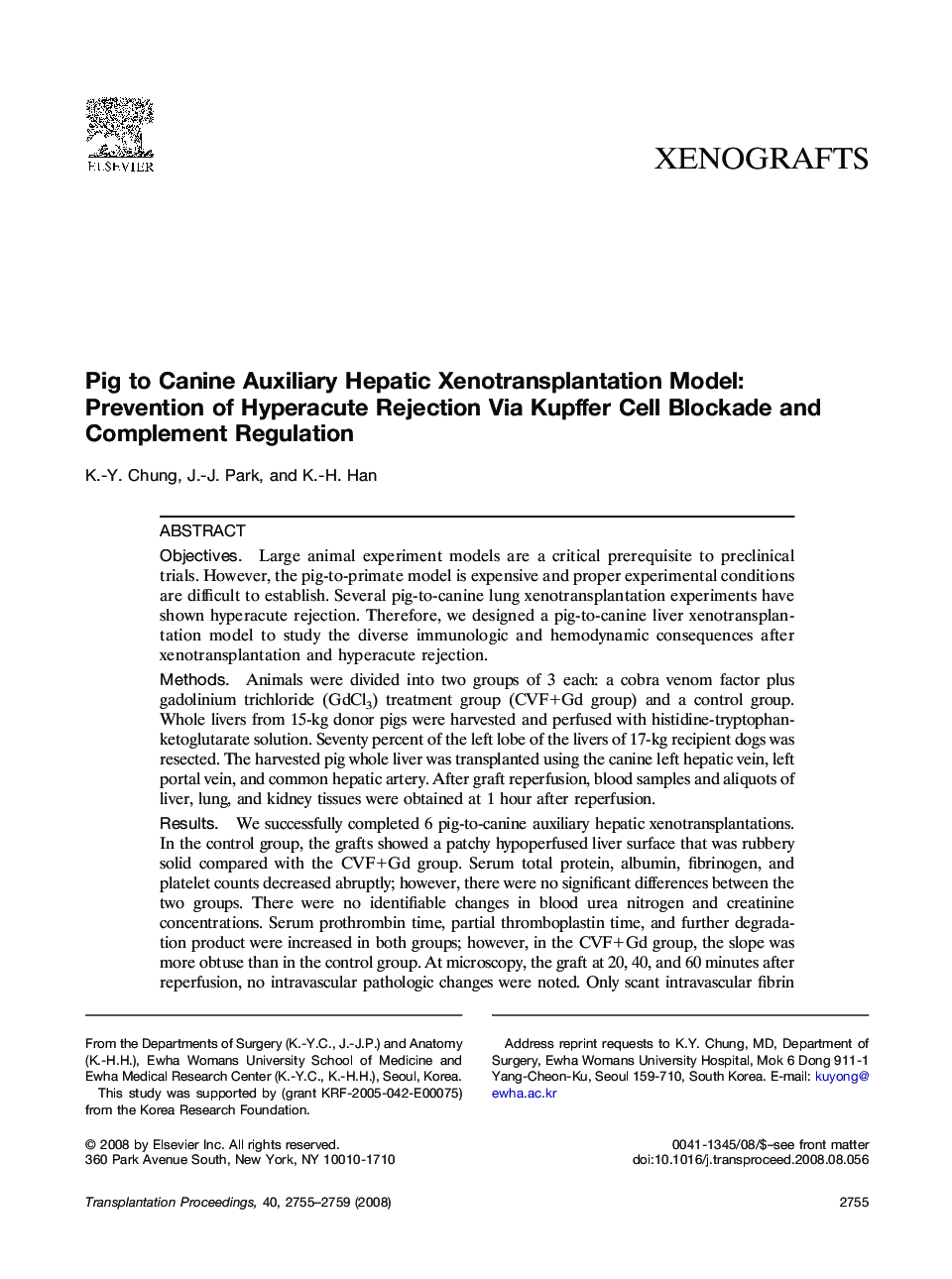| کد مقاله | کد نشریه | سال انتشار | مقاله انگلیسی | نسخه تمام متن |
|---|---|---|---|---|
| 4262050 | 1284601 | 2008 | 5 صفحه PDF | دانلود رایگان |

ObjectivesLarge animal experiment models are a critical prerequisite to preclinical trials. However, the pig-to-primate model is expensive and proper experimental conditions are difficult to establish. Several pig-to-canine lung xenotransplantation experiments have shown hyperacute rejection. Therefore, we designed a pig-to-canine liver xenotransplantation model to study the diverse immunologic and hemodynamic consequences after xenotransplantation and hyperacute rejection.MethodsAnimals were divided into two groups of 3 each: a cobra venom factor plus gadolinium trichloride (GdCl3) treatment group (CVF+Gd group) and a control group. Whole livers from 15-kg donor pigs were harvested and perfused with histidine-tryptophan-ketoglutarate solution. Seventy percent of the left lobe of the livers of 17-kg recipient dogs was resected. The harvested pig whole liver was transplanted using the canine left hepatic vein, left portal vein, and common hepatic artery. After graft reperfusion, blood samples and aliquots of liver, lung, and kidney tissues were obtained at 1 hour after reperfusion.ResultsWe successfully completed 6 pig-to-canine auxiliary hepatic xenotransplantations. In the control group, the grafts showed a patchy hypoperfused liver surface that was rubbery solid compared with the CVF+Gd group. Serum total protein, albumin, fibrinogen, and platelet counts decreased abruptly; however, there were no significant differences between the two groups. There were no identifiable changes in blood urea nitrogen and creatinine concentrations. Serum prothrombin time, partial thromboplastin time, and further degradation product were increased in both groups; however, in the CVF+Gd group, the slope was more obtuse than in the control group. At microscopy, the graft at 20, 40, and 60 minutes after reperfusion, no intravascular pathologic changes were noted. Only scant intravascular fibrin deposition was observed. Hepatocellular vacuolization and sinusoidal dilatation were seen. There was patch necrosis without a zonal distribution, and intrasinusoidal neutrophil sequestration and interstitial hemorrhage. These findings were milder in the CVF+Gd group.ConclusionA pig-to-canine partial auxiliary liver xenotransplantation model is feasible. In the CVF+Gd treatment group, pathologic findings of patch hepatocyte necrosis were less severe. Inasmuch there was no corresponding vascular pathologic finding, these abnormalities are not a direct effect of CVF+Gd treatment. Other factors such as ischemia-reperfusion injury should be considered.
Journal: Transplantation Proceedings - Volume 40, Issue 8, October 2008, Pages 2755–2759